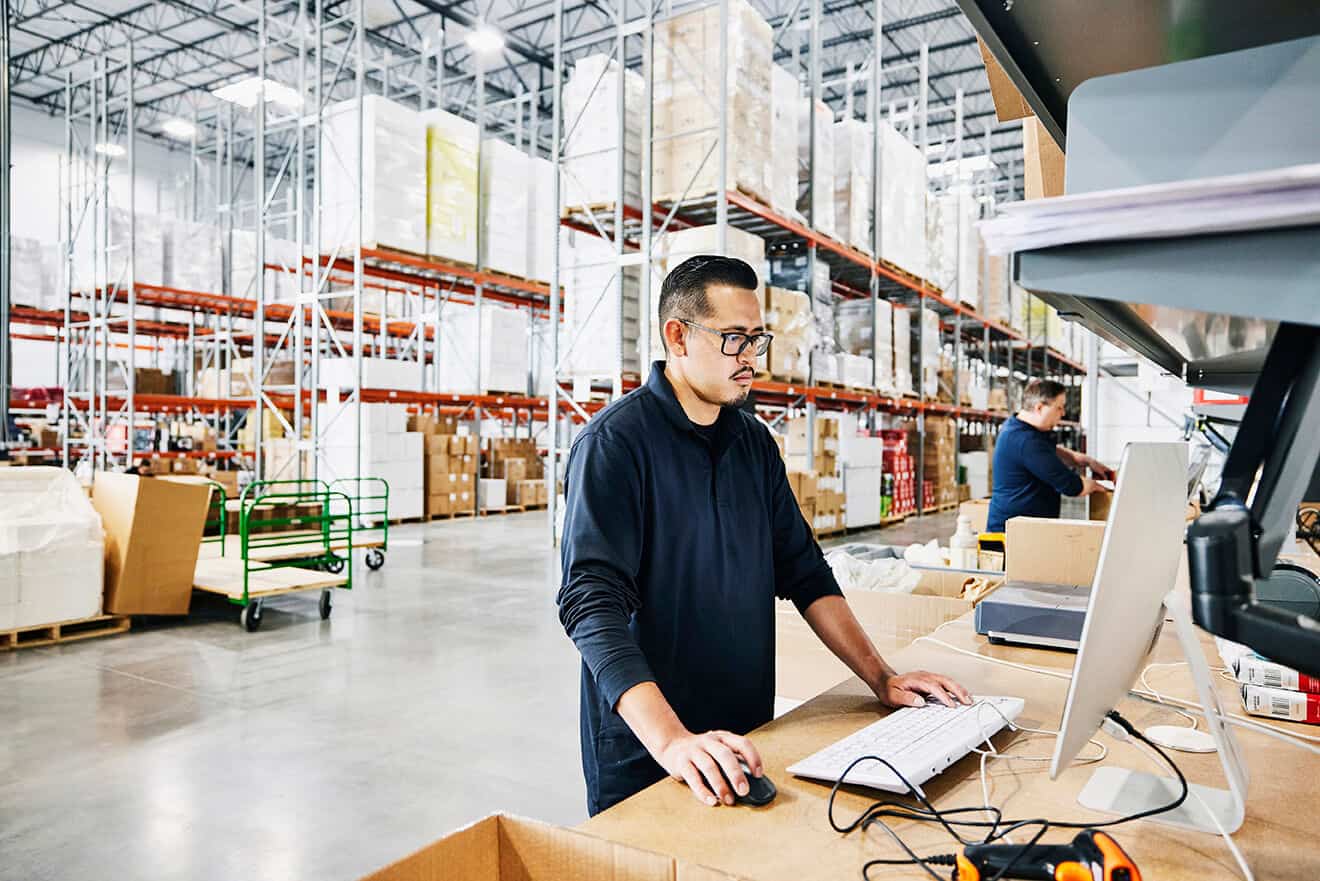
If you’re in the business and don’t realize the benefits of digitizing your operations—I give you my condolences. Digital freight forwarding is to logistics as Amazon is to retail. The retail graveyard is littered with companies that were too slow to pivot and adapt to digit-first business processes; to operate with digital dexterity. While Amazon is approaching 30 years of digital disruption in retail, digital transformation in other industries is happening much faster. And it’s happening in the freight forwarder space.
What is digital freight forwarding?
Freight forwarders help their customers transport goods across borders and ensure the smooth flow of international commerce. What distinguishes digital freight forwarders is their use of technology to provide enhanced services with greater efficiency. According to Allied Market Research, the global digital freight forwarding market was valued at $2.92 billion in 2020 and is projected to reach $22.92 billion in 2030—a compound annual growth rate (CAGR) of 23.1%.
Uncertainty is the only certainty
The brutal reality of the last few years in supply chain and logistics is well reported on; I don’t need to bore you with the list of disruptions here. Suffice it to say disruptions at increasing frequency and voracity are here to stay for the foreseeable future.
Freight forwarding is and always will be a people-oriented business, where success is built on establishing trust and providing excellent customer service. However, the industry is ripe for digital transformation. Only forwarders who adopt digital processes supported by a network and AI technology will thrive and grow. Digital technology automates the routine so that you can focus on the valuable. Technology can provide visibility and insights on what is likely to happen so that you can proactively adjust and meet commitments. These capabilities are not feasible with spreadsheets, emails, phone calls, and legacy point systems.
Transforming a 140-year-old business
Leschaco is a global logistics service provider that has helped move freight for over 140 years. An enduring company like Leschaco succeeds by bucking the status quo. However, its legacy systems to manage its customers’ air, sea, and land freight movements out of 73 offices across 22 countries and 5 continents were too siloed and inefficient.
To delight their customers and drive greater operational efficiency, they needed to modernize their operational backbone, their transportation management system. Leschaco partnered with e2open last year to start its digital transformation journey. By the end of 2022, their air freight business was already live in all 22 countries.
“We have come to the realization that e2open is the ideal partner for Leschaco from a software capability point of view as well as from a cultural fit. We found a reliable partner that will support us in this change and along our business needs in the future.” – Constantin Conrad, Chief Digital Officer, Leschaco
E2open’s web-based Transportation Management System integrates with many of Leschaco’s homegrown and critical legacy applications to create a digital platform with deep functionality to efficiently manage its customers’ air, sea, and land freight movements—custom-built for the needs of a freight forwarder.
Leschaco chose e2open because of the platform’s adaptability to evolve and future-proof its business as the company continues to grow. The two companies continue working to automate and streamline processes, increasing flexibility to adjust to change and enhancing visibility and tools to optimize the customer experience.
Four steps to start your digital transformation journey
Journey is the operative word here. Digital transformation is truly a journey more than a destination. The journey is unique to each company, so start by defining your goals and objectives. But don’t be rigid in your vision; the changing world will have you change course, like a navigation system routing you around traffic. Technological advancements, innovations, social and economic trends, and the increasingly uncertain world will create new challenges and even more opportunities.
If you haven’t already, start by assessing your current organizational processes and KPIs and consider your customers’ common requests and complaints. This will likely point to areas of opportunity to drive out cost through operational efficiencies or new capabilities to serve your demanding customers better.
You may end up with a set of capabilities longer or shorter, but here are the top things I hear from forwarders and on every shipper’s wish list.
1. Visibility of goods in transit
The value of seeing exactly where your shipments are at any given time may seem self-evident. However, what you—and your customers—are really after is when it will arrive at its destination, and if it’s late, why? E2open Logistics Visibility gives you real-time location visibility into every shipment across all modes, legs, and regions. And it provides insights to help you make informed business decisions and pivot to deliver shipments on time and in full.
2. Transportation management system (TMS)
The heart and soul of the forwarding business. However daunting replacing your legacy or homegrown system might seem, that system is likely limiting your growth and profit potential. Manual workflows and custom integrations are barriers to expanding into new geographies or adding advanced capabilities. E2open’s industry-leading TMS helps you manage shipments for multiple customers across all modes (road, rail, sea, and air) and geographies. Free up resources and scale your business without sacrificing quality by automating key processes. E2open helps you reduce the cost and time it takes to handle each shipment, resulting in better customer service and the ability to differentiate your business in a competitive market.
3. Network access and connectivity
Freight forwarders are connectors by trade, connecting cargo owners with carriers to move goods around the globe. Integration is core to e2open’s operating principles. Founded on a come-as-you-are integration philosophy, e2open supports nearly any data format and communication protocol, including a broad set of open APIs for fast, reliable integration between systems and organizations. E2open’s vast network of over 400,000 shippers and carriers enables you to gain end-to-end visibility and future-proof your business with a platform built with resilience for an unpredictable world.
4. Global trade compliance and filing
Export compliance regulations keep getting more complicated in more places around the world. If you don’t have the technology to review every export transaction, you leave yourself open to unnecessary cross-border delays and avoidable violations. E2open’s Export Management automates export compliance, including country controls, restricted party screening, license determination and tracking, and document generation for efficient processing. Furthermore, you can consolidate all your trade into the correct filing format and submit it more efficiently with e2open Customs Filing by automating multi-country customs declarations and filings.
If you already have some of these capabilities in-house, congratulations, you are on your way. However, this is just the beginning of the journey toward becoming a digital freight forwarder. If you haven’t started or feel the parts you have are not as integrated as they need to be, it’s never too late to revisit your technology landscape and take steps to future-proofing your business.
As the saying goes, the best time to start your digital transformation journey was yesterday. The second-best time is today. So, let’s get started. Let’s talk.

Author
Mike Hitmar
Mike is a Senior Director of Product Marketing and leads the product marketing team at e2open. In this role, he works with clients to understand their needs and help deliver mission-critical, end-to-end supply chain management solutions. He has over 25 years of supply chain experience as a practitioner and business solutions provider across multiple industries. Prior to e2open, he held leadership roles at IBM, SAS, and General Motors, as well as early-stage startups, in engineering, marketing, product management, and product marketing. Mike holds a BS in Industrial and Systems Engineering from Ohio University and an MBA from the University of Michigan’s Ross School of Business. Outside of work, Mike likes to be outdoors and marvel at his two talented son’s – one a designer and jazz musician, the other an athlete and entrepreneur. A native of Ohio and a Gulf War Veteran, Mike now lives under sunny blue skies in Raleigh, NC.







